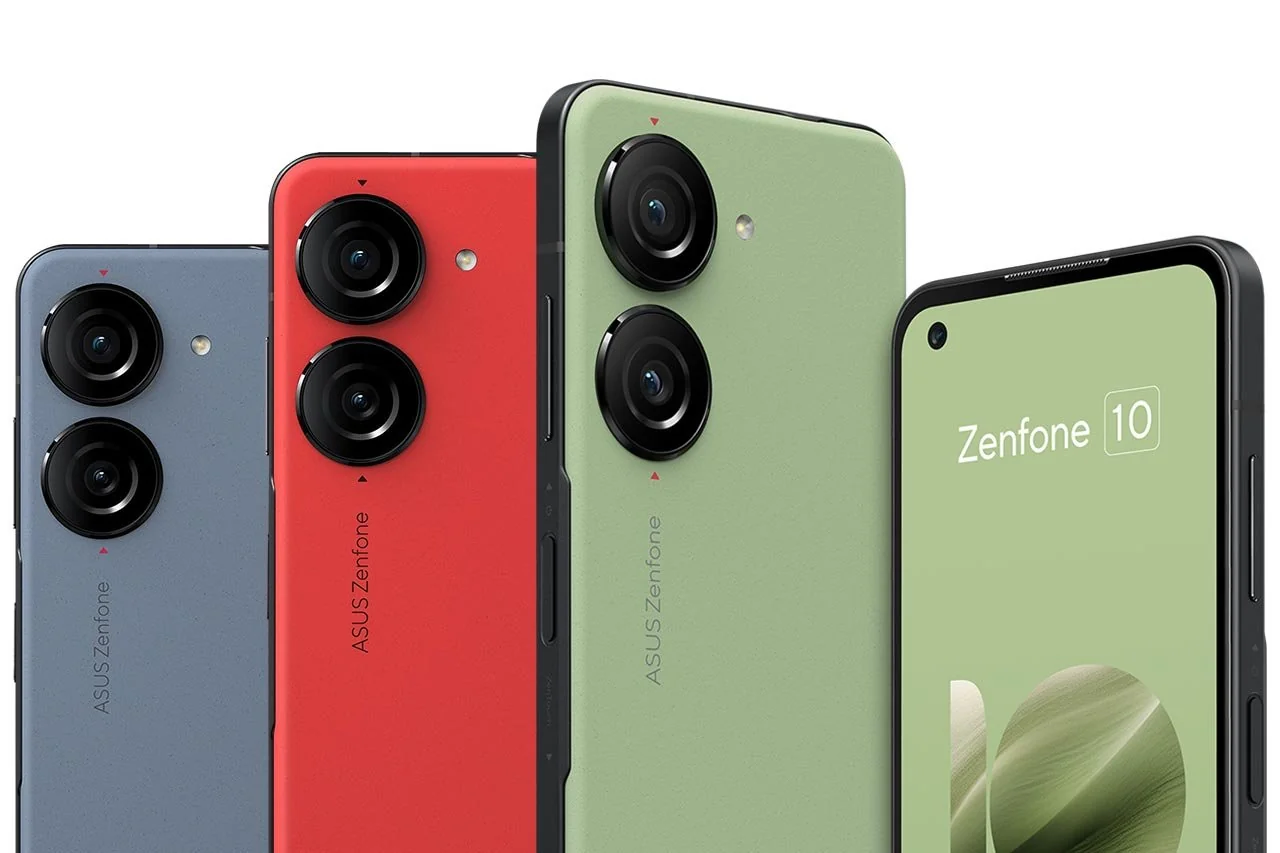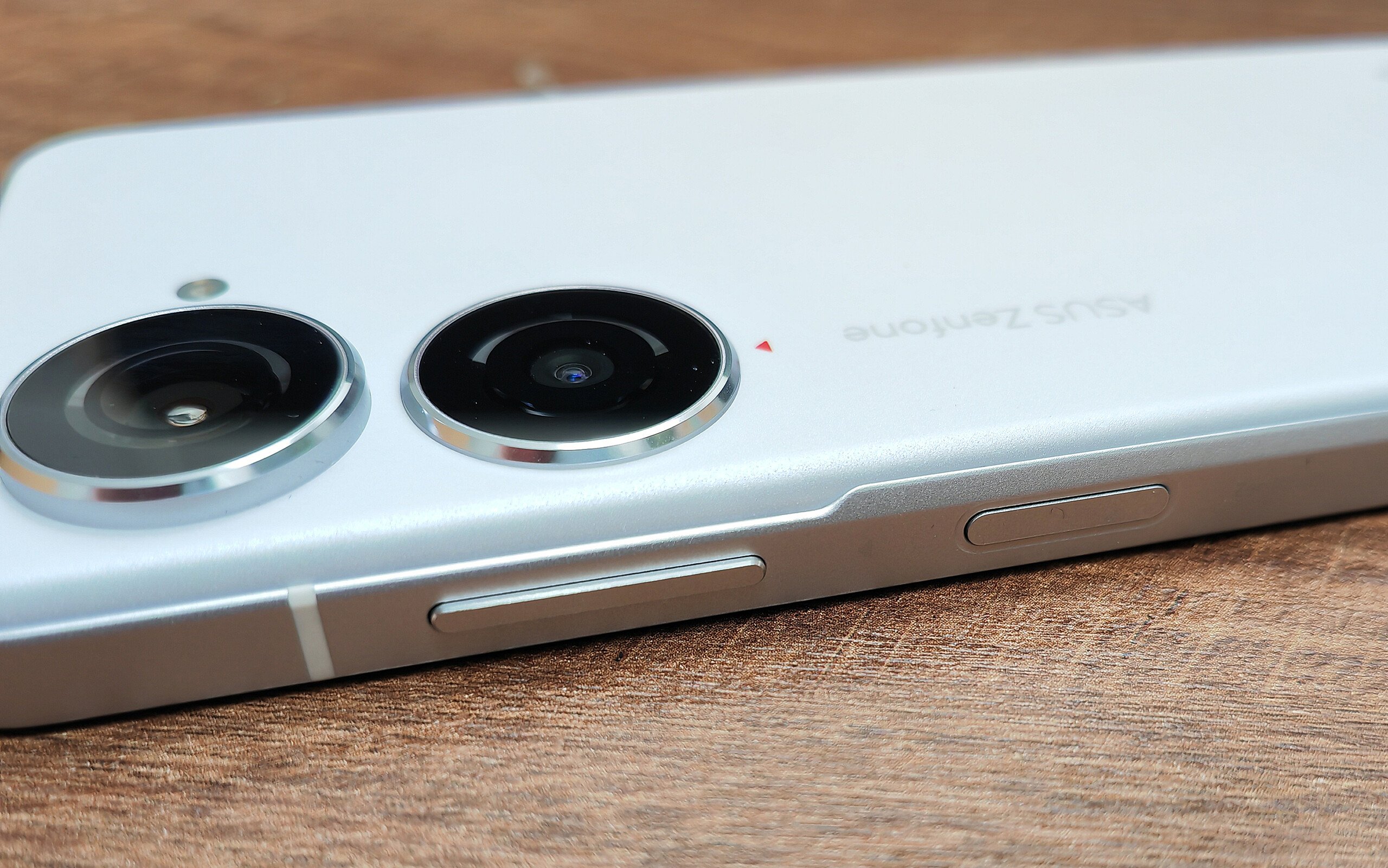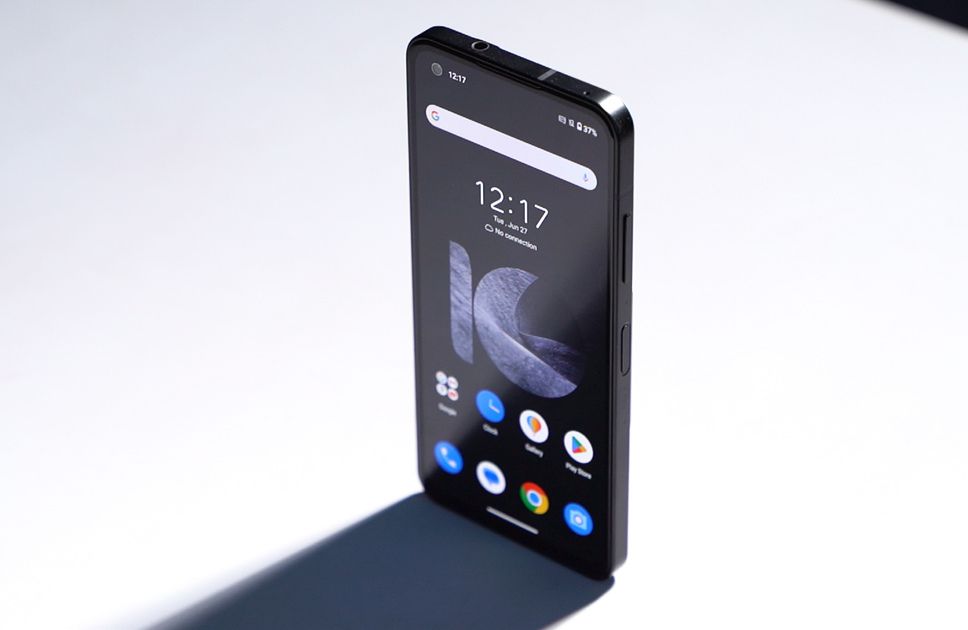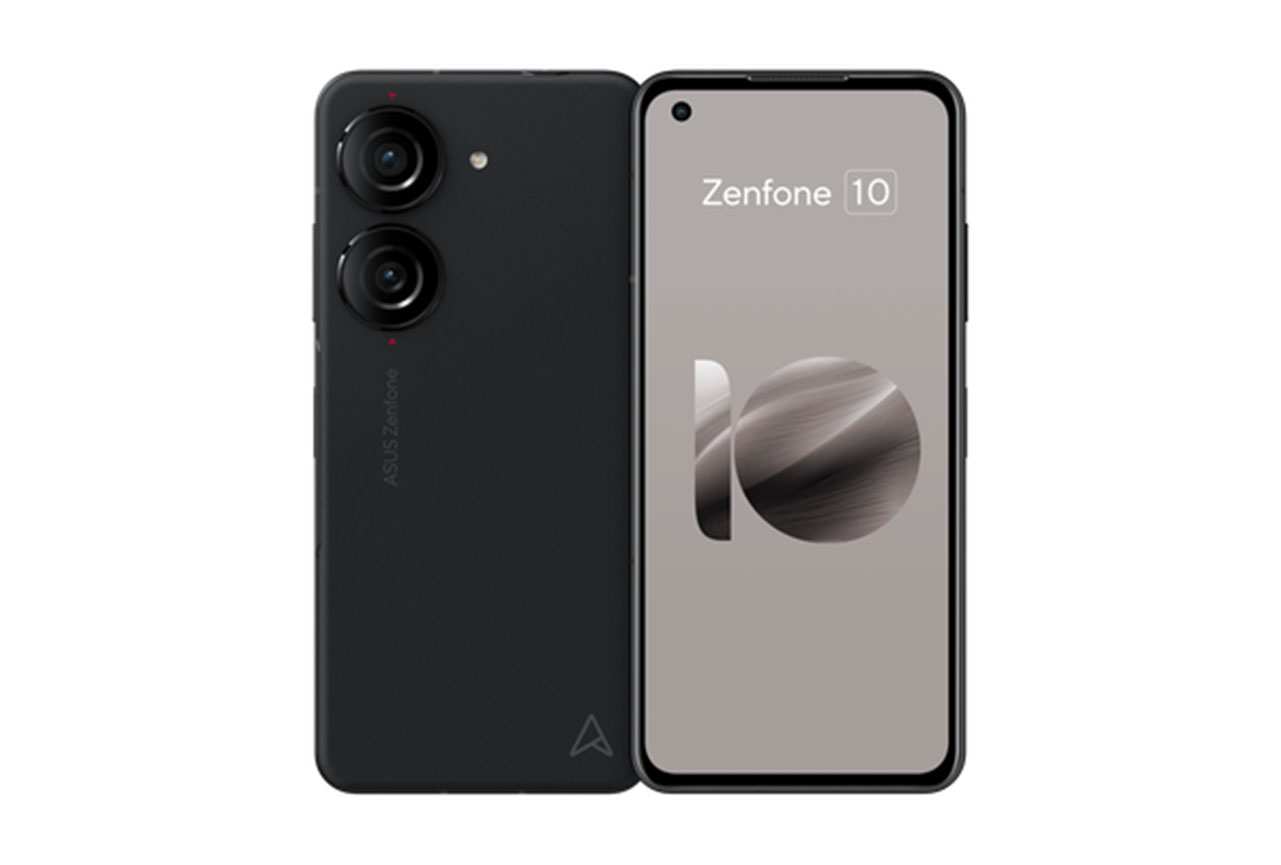Asus Zenfone 10 Design and Build Quality
The Asus Zenfone 10 keeps a similar aesthetic to its predecessor, the Zenfone 9, which is a good thing. The textured back provides a secure grip, making it easy to handle. At just 172g, it’s light enough to carry comfortably without feeling too insubstantial.

Pros:
- Compact, lightweight, and highly portable.
- Buttons are intuitively positioned.
Cons:
- Fingerprint sensor can be inconsistent.
The power button and fingerprint sensor are conveniently placed, though the fingerprint reader sometimes has trouble recognizing prints. Asus also includes the rare 3.5mm headphone jack alongside stereo speakers with “Dirac Virtuo” audio technology, offering clear sound, though they could be a bit louder. Overall, the build quality is excellent and true to Asus standards.
Asus Zenfone 10 Display
Despite its compact size, the Zenfone 10 has a 5.92-inch AMOLED display with a 2,400 x 1,080-pixel resolution and up to 144Hz refresh rate (for gaming). Most users will experience it at 120Hz, which provides smooth visuals and vibrant colors. The thick bezels, however, are a minor drawback.

Pros:
- Crisp, vibrant display that performs well in daylight.
- High refresh rate (144Hz for gaming).
- Always-on display.
Cons:
- Thick bezels take up screen space.
- Occasional touch input issues.
The display features Gorilla Glass Victus for extra durability. Settings include brightness, refresh rate, and color temperature adjustments through Asus’s “Splendid” app. There’s also an Always-on Display, though with minimal customization.
Asus Zenfone 10 Software
Running on Android 13 with a streamlined ZenUI, the Zenfone 10 is nearly free of bloatware. Aside from Facebook and Instagram, the software remains lean and user-friendly.

Pros:
- Minimal bloatware.
- Handy pre-installed apps.
Cons:
- Short update policy.
ZenUI offers practical tools like “Back Tap” gestures, “Edge Tool” for app shortcuts, and “Game Genie” for gaming settings. Asus’s update policy, however, is limited to two years of Android OS updates and four years of security patches, slightly behind competitors like Samsung.
Asus Zenfone 10 Performance
Equipped with the Snapdragon 8 Gen 2, the Zenfone 10 offers powerful performance for everyday tasks and gaming. However, the compact chassis can get hot during prolonged use.
Pros:
- Excellent performance from the Snapdragon 8 Gen 2.
- Smooth multitasking.
- Generous internal memory.
Cons:
- Lacks microSD support.
- Can get uncomfortably warm under heavy load.
The Zenfone 10 handles multitasking and high-end games effortlessly, though heavy usage can make it run warm. While there’s no expandable storage, its specifications make it a strong choice for most users.
Pricing
The Asus Zenfone 10 is priced at approximately $699 USD, providing strong value for its performance, compact design, and high-quality build.

Leave a Reply